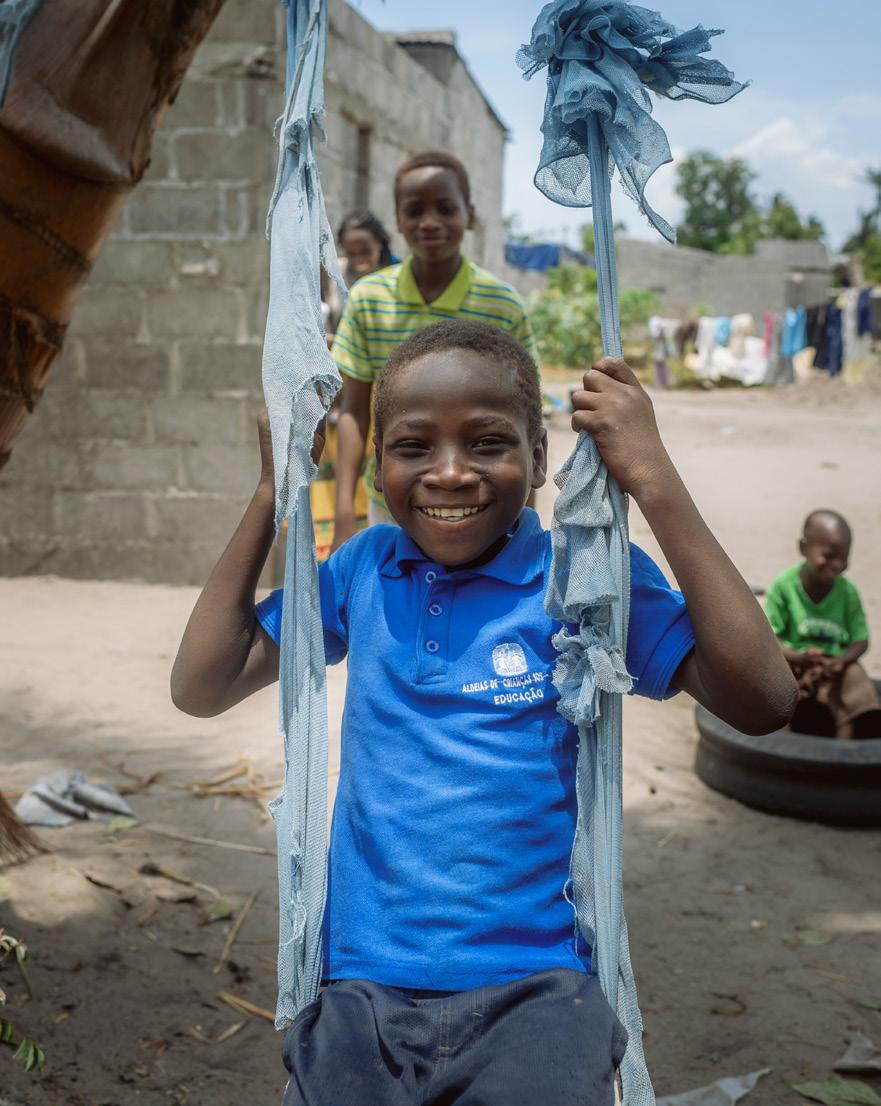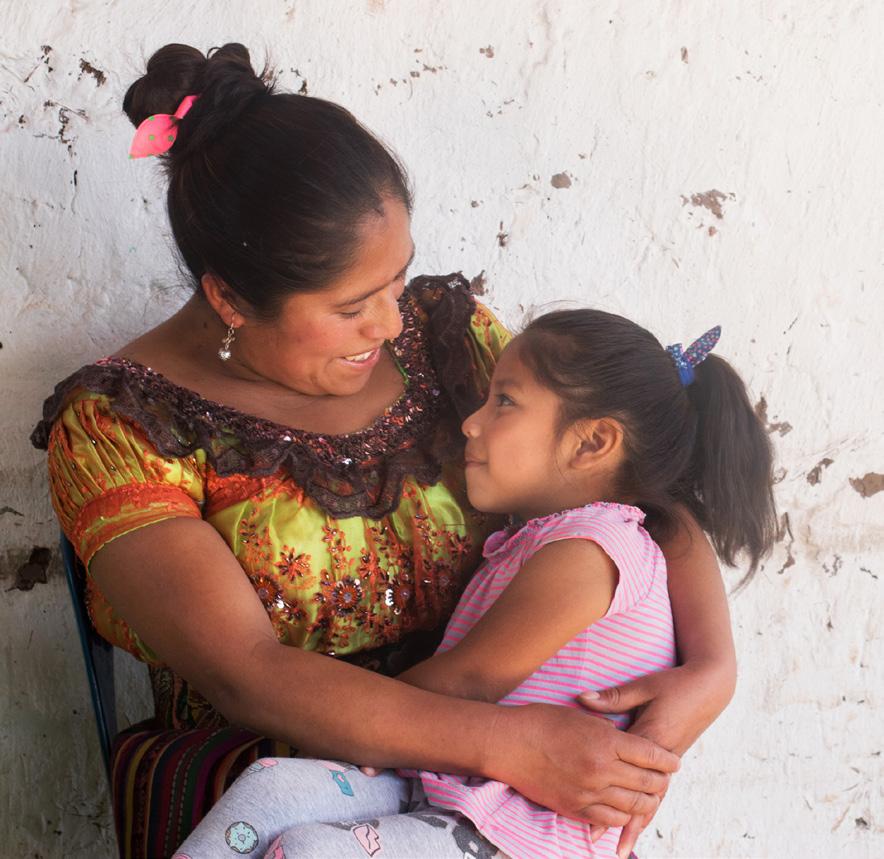
6 minute read
7.3.2 Fundraising
initiated the transition to prevention. By making families stronger and thus preventing children from being neglected and abandoned, alternative family-based care should serve as the safety net.
The reintegration of children in their biological family is the second focal point. There are also children growing up in our Children’s Villages who still have family. If it is safe and in the interest of the child we take the step towards family reintegration, applying the necessary vigilance and policy, a clear strategy, close guidance and monitoring.
Advertisement
Moreover, one of our objectives is to innovate family-based care, including the social and physical integration of SOS families in the community. Research and experience has revealed that growing up in a ‘normal’ community setting is positive for the development of children: they have greater self-confidence, assume more responsibility (are less dependent) and have more realistic life expectations. It also provides synergy between children from SOS families and children from the community: it strengthens social ties and prevents stigmatisation. It is also good for the caregivers: they have more autonomy. Here too, guidance and proper preparation is essential for a successful transition.
The Netherlands With Simba Family Care we aim to further develop, promote and transfer our methodology, and to work together with organisations in youth care and other care professionals to reform existing youth care systems. In which siblings are kept together in out-of-home placements and intensive family strengthening form our basic principles for successful family reintegration.
Youth Employment
We are observing an increase in youth unemployment, particularly in Africa, an increase that is likely to be exacerbated due to the effects of Covid-19. Research reveals that it is more difficult for young people from alternative care or from vulnerable families to find a decent job than for their peers who have grown up in a loving and supporting family setting. They do not have the same opportunities, which can lead to poverty, social exclusion and abuse. Our youth employment programmes focus on these young people, on inclusion.
Green and digital We are also seeing that a number of institutional donors are increasingly prioritising the digital business development and green economy sectors. This is evident in funding programmes of the Ministry of Foreign Affairs, such as the Challenge Fund for Youth Employment and NEXUS Skills for Jobs, and in the portfolio plans of the European Union for the new Multi-Financial Framework 2021-2027. We are trying to gradually gain experience in this area, such as with the GrEEn Economy project in Ghana. In addition, we are in the process of submitting an application for digital business development, to be able to respond to technological developments.
7.3.2 FUNDRAISING
Identifying the desired and most efficient channel for reaching new and existing donors is a constant challenge. The opportunities appear to be in digitisation and automation in order to facilitate customisation. Responding as effectively as possible to individual wishes via diverse channels is the best alternative to personal contact – contact we have greatly missed this past year. Of course, there was the online masterclass for our stakeholders, and in the coming year we want to continue to develop and expand online events. Nevertheless, personal contact is important and we hope it will soon be possible once more. Fortunately we are able to resume
face-to-face donor recruitment taking the Covid-19 rules into account.
It is now known that stricter regulations regarding telemarketing are indeed on the horizon. On the one hand, to safeguard your privacy, on the other it makes it more difficult for us and many other charities to seek and maintain contact with our supporters and the Dutch public. Basically, you may be approached if you already support us, but in other cases you first have to grant consent. A similar rule applies to the increase in online payment options. It gets easier and more flexible by the day with QR codes, Social Media and Tikkie etc. At the same time it is also more anonymous due to stricter (GDPR) regulation. As a result of the strict rules related to data protection we receive less and less details from donors, which makes it increasingly difficult to communicate the impact a donation has.
Donor trends
A number of trends in 2019 continued in 2020. Young donors in particular want to decide whether and how they bind themselves to a charity. They expect a wide range of options so they can decide for themselves. The use of authentic stories still plays an important role for maintaining donor involvement. Transparency and honesty are unwavering conditions for donors of all ages.
The developments at the digital and technological level play a major role in this regard. This particularly applies to the increase in mobile applications, which offer considerable choice and autonomy. We can reach more people by diversifying our messages and touchpoints and using both existing and new options.
We are keen to be able to communicate one-on-one using customisation. The expected income from legacies has increased several years in a row. This trend will continue for a while due to the demographic structure in the Netherlands and the increase in life expectancy.
The willingness of our donors to take action remains high. People not only want to donate, but to also make a difference. The unexpectedly high level of support for our
focus countries affected by Covid-19 clearly demonstrated this in 2020.

Partnerships
Partnerships with businesses, charitable trusts and foundations are vital for us. The impact these – often long-term – forms of cooperation have on the lives and future of children wherever they are in the world, is huge. Our partners provide money, materials and services that SOS Children’s Villages can use to help the most vulnerable children. Making a difference together, also helps improve our and their brand awareness so we can inspire even more partners to commit to our mission.
Strategic steps and targets for 2021
• To retain private donors through a personalised approach based on consumer insights and data-driven results. • To structurally focus on lead generation, in which we establish contact based on recognisable programme points related to the theme of ‘Family’, with people who have shown an interest in that, but do not know us yet, to ultimately make them interested in becoming a donor. • To focus on innovation and optimisation across the fundraising board. To focus on developing new proposals and learning from the Playbook methodology, which is also supported internationally. • To boost our digital strategy by formulating a Digital Roadmap to plot our necessary growth in digital, data-driven and IT projects. To ensure we are Fit for the Future. • Omnichannel approach when implementing campaigns by optimally using as many channels as possible to subsequently select the most favourable. • To improve our market position and share of voice by rolling out our new brand strategy through the new brand campaign. • To grow and intensify cooperation with charitable trusts and foundations, and partners with funds, financial services, networks, expertise, organising an event and/or with the direct involvement in a programme, that want to contribute to our mission. • To increase the number of legacies, by informing more people about the possibility of including SOS Children’s Villages in their will and by contacting people who have already included us in their will. • To expand the Families for Families network to include more families and family-run businesses.










